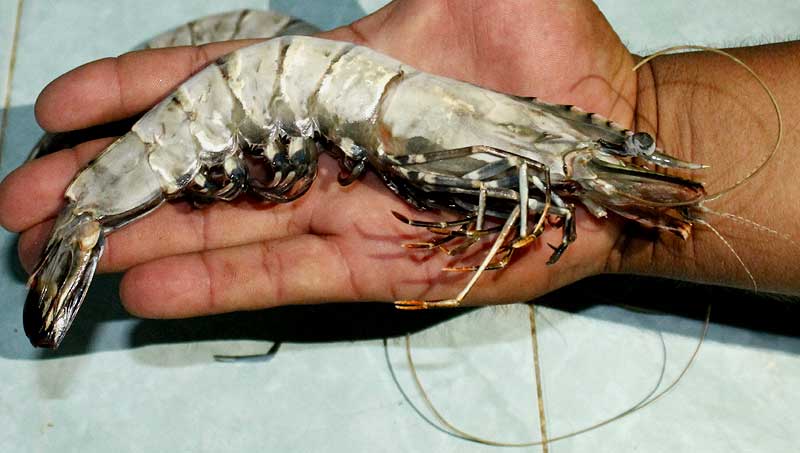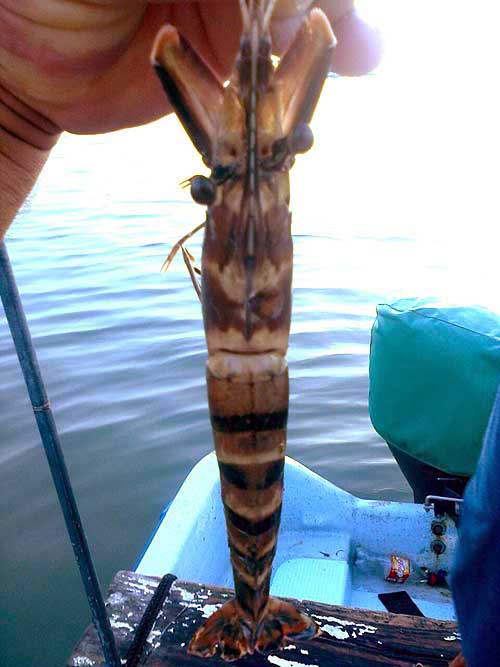Excerpts from Jim Conrad's
Naturalist Newsletter

from the November 16, 2014 Newsletter issued from Río Lagartos, on the Yucatan Peninsula's northern coast (~N21.60°, ~W88.16°), Yucatán state, MÉXICO
ASIAN TIGER SHRIMP
Earlier this year local fishermen began speaking of a kind of gigantic shrimp being caught in Ría Lagartos estuary, something never seen in these parts. This week my host, naturalist and guide Diego Nuñez, was shown two frozen specimens from a local fisherman's freezer. One of Diego's pictures of the creature, white with freezer frost, is shown above.
When Diego asked around, another fisherman showed him a snapshot of one he'd caught -- this specimen displaying its colors -- seen below:

With pictures in hand, it didn't take long to identify this as the Asian Tiger Shrimp, also called Giant Tiger Prawn and other names. It's PENAEUS MONODON, and in our waters it's an invasive species. It's a native of waters of the eastern coast of Africa and the Arabian Peninsula to Southeast Asia, the Sea of Japan, and northern Australia.
Asian Tiger Shrimp is the world's second most widely cultured prawn species. The term "prawn" refers to any large shrimp or small lobster with long, slender claws. By "cultured prawn" is meant that the prawn is grown commercially in ponds, tanks, or other controlled environments. In 2009, US$3,650,000,000.00 of Asian Tiger Shrimp were sold on the world market, and the updated graph showing yearly production displays impressive growth. On the FAO's web page profiling the species we read that "In general, Penaeus monodon is the most prominent farmed crustacean product in international trade and has driven a significant expansion in aquaculture in many developing countries in Asia."
What does it mean that Asian Tiger Shrimps are establishing themselves in the Ría Lagartos Biosphere Reserve? In Asia's tropical waters, the cultivation of Asian Tiger Shrimp has been good for those who sold them, including small farmers in impoverished rural settings, but the effects on the environment often have been bad. Large acreages of mangrove have been converted to shrimp-growing ponds. High prices for the prawn and need for seed stock for cultivation have caused wild Asian Tiger Shrimp to be overharvested. Asian Tiger Shrimp are vulnerable to a variety of diseases, and water issuing from their confinement pools often contains those diseases as well as waste matter, medicine and other pollutants.
Besides announcing the identification here, I've sent our pictures to both the USDA department dealing with invasive species and the biodiversity specialist at the Centro de Investigación Científica de Yucatán, in Mérida, so I have done what I can to alert the proper officials.